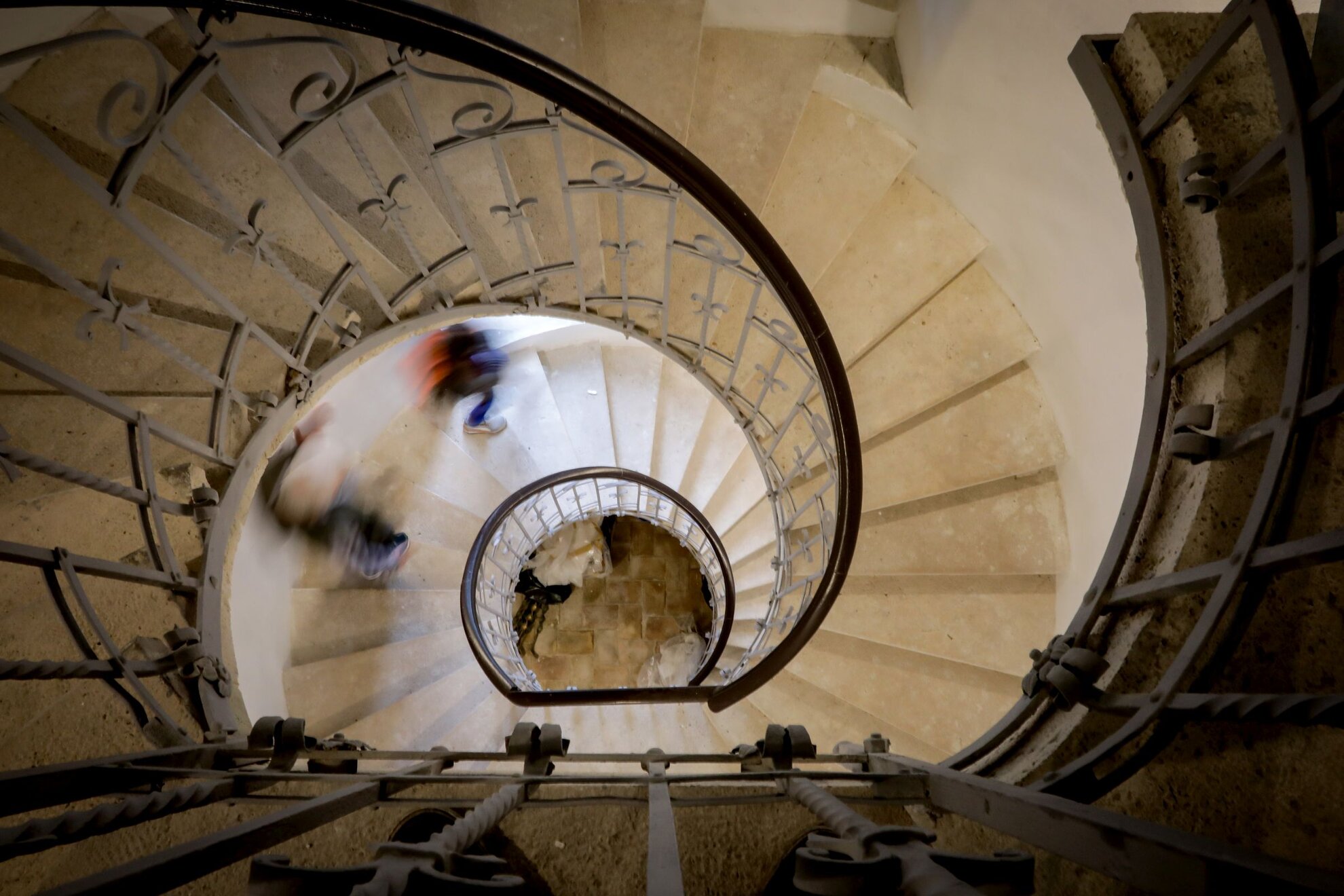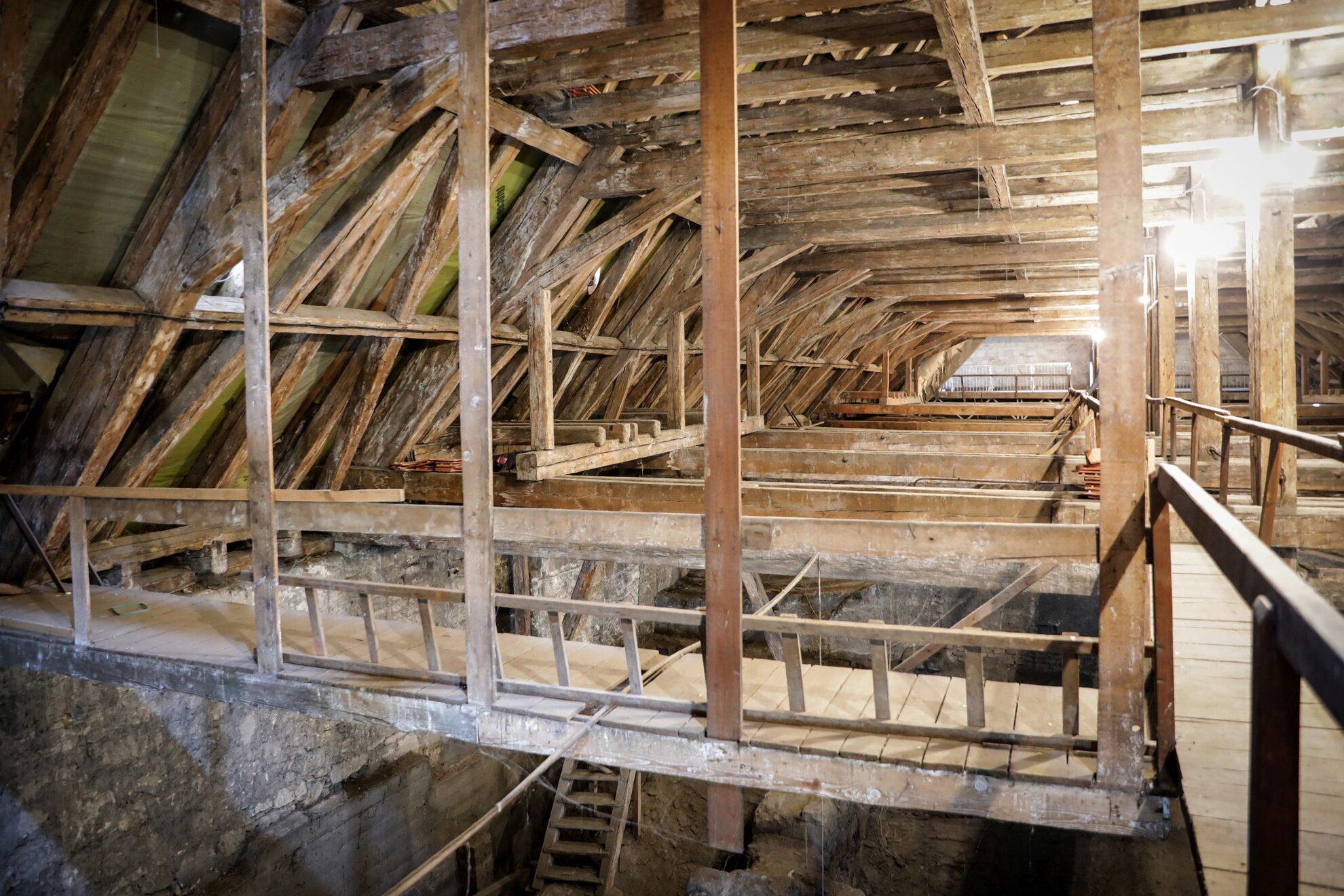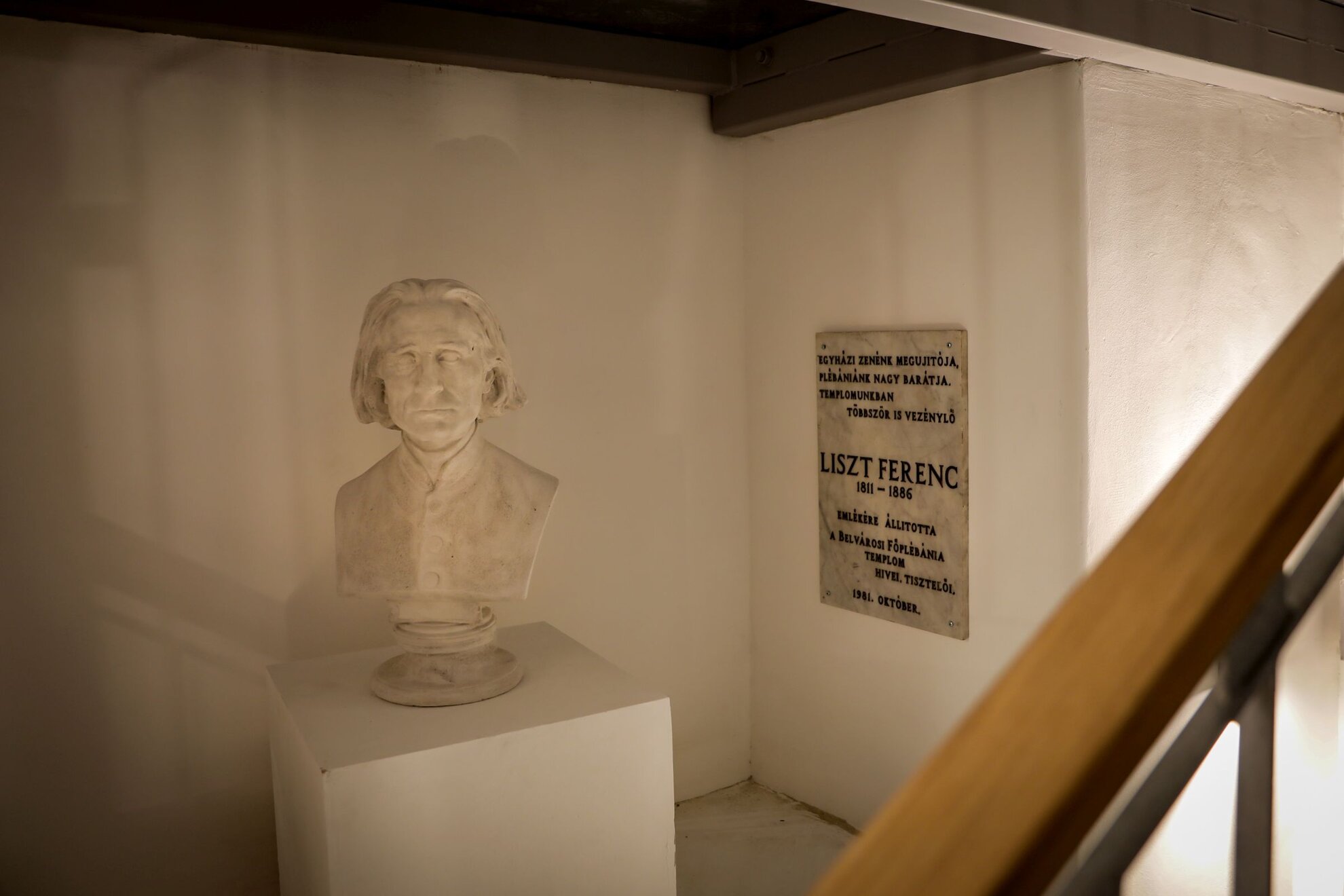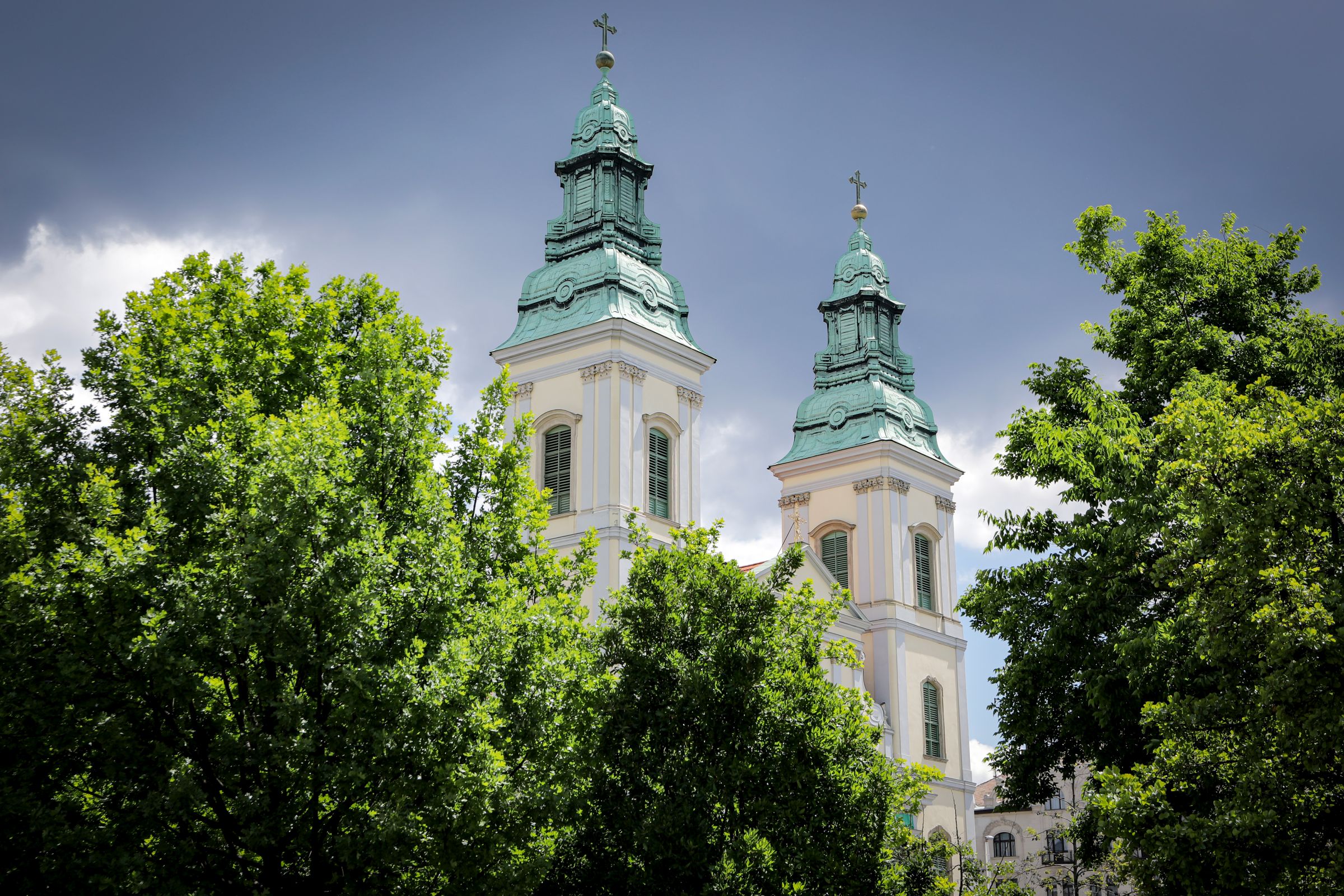Budapest’s Inner City Parish Church is a real patchwork building, preserving the memories of 14 architectural eras. Bishop Gellért was buried here when this was a Romanesque basilica. It was later rebuilt by Kings Sigismund and Matthias, then used by the Turks as a mosque. There are even remains of Roman walls. The structure you see today dates back to the 16th century, but it gained its current Baroque appearance after a fire in the 18th century.

The tower walk begins at the bottom of the south tower, closer to the bridge. Here you can admire the reconstructed remnants from the 12th century, where the outer wall of the basilica once stood. Going up to the lookout point, you can make out Elizabeth Bridge and Gellért Hill opposite – and observe that the road bypasses the church by just 30 centimetres, disproving the legend that they had to push the church back when they built the bridge in the early 1960s.

The next stop on the route is the area behind the façade, consisting of a dense network of beams. The roof structure is the result of a magnificent carpentry work: 18th-century architectural solutions and screw-free wedges were used during construction. Although these methods can no longer be found in textbooks, they have withstood the test of time and the strong winds coming off the Danube.

From here, you reach the north tower, where the church bells ring twice a day (thrice on Fridays), so you should time your visit to avoid being deafened. This tower was named after Franz Liszt, who has many links to the church, conducting several times here. He also presented his Esztergom Mass, originally debuted in the Esztergom Basilica, at the Inner City Church due to the better acoustics.
A copy of the composer's bust and a recently unearthed plaque have been placed in the tower stairwell. The gallery with the 5,621-pipe organ can be reached from this staircase, but it will only be visible on special guided tours.
Inner City Parish Church
District V. Március 15 tér
Facebook




